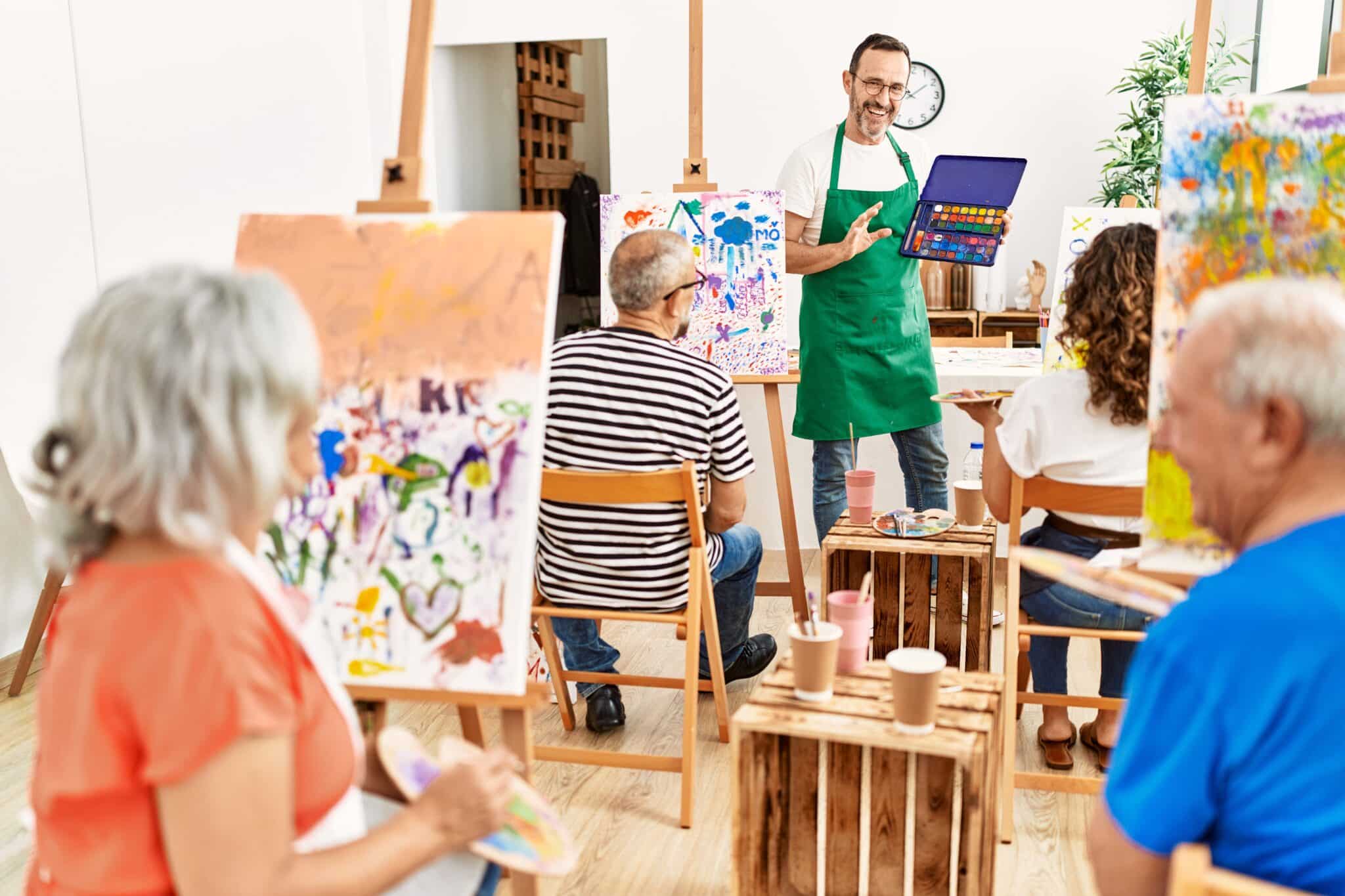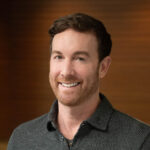Are you thinking of living on a golf course? As an avid golfer, your dream retirement may include living in a beautiful home on the back nine of a private course in your favorite golf-savvy city. Maybe you plan to have a separate garage bay for a golf cart. You foresee barbecues where you and your friends place friendly bets on which of the foursome on the green will score a win. You’re about to put your current home on the market so you can start looking for the perfect place. But hold up! Do you really know what you’re signing up for?
It’s not just about blue skies and green horizons—you may find yourself living in the rough. We’ve compiled some must-know information you should consider before making an offer on a course-side home.
Financial Considerations

Overall, your dream home may be a good long-term investment. Since the beginning of the COVID-19 pandemic, demand for homes on and near golf courses has been on the rise. With a broader, younger demographic embracing the country club lifestyle, these properties are projected to hold their value.
Homeowners’ Association (HOA)
But on an ongoing basis, that investment’s going to have some out-of-pocket costs. Your home may be bound to a homeowner’s association (HOA) with higher-than-usual fees. Fair enough; homes in HOA neighborhoods do well in the resale market. And love ’em or hate ’em, HOAs hold neighbors to high standards, so the general aesthetics of the community are kept up to snuff.
Country Club Membership Dues
You might be required to join a country club with high monthly dues, but these clubs come with plenty of perks, from engaging social calendars to participation in local tournaments. And if you buy a house on their course, you may be entitled to a healthy discount on membership dues.
Depending on your budget and long-term plans, you might see all the extra costs associated with a golf course view as money well spent.
Pros
- Golf course homes are expected to hold or increase in value over time.
- HOAs maintain high standards, keeping the community visually appealing and well-kept.
- Access to perks like tournaments and social events.
- Potential discounts on dues for residents living on the course.
Cons
- Initial investment may be high.
- HOA fees can be higher than average.
- Some may find HOA rules restrictive or overly controlling.
- Monthly dues can be expensive, and membership might be required.
Property Damage
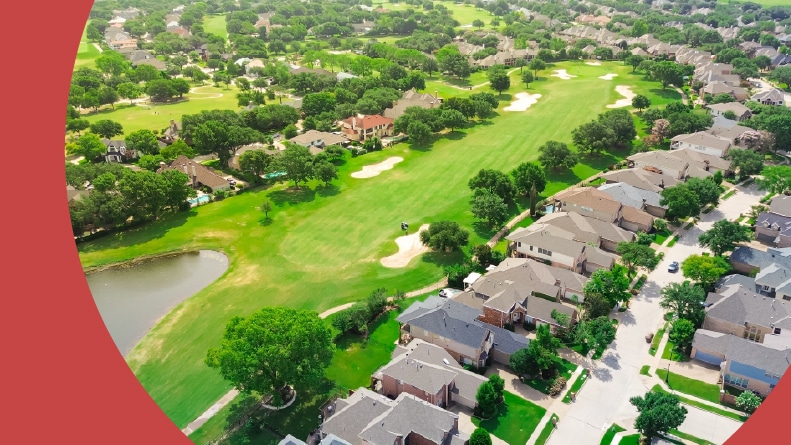
Admit it: You’ve wondered how likely it is that a golf ball will come crashing through your plate-glass window. It can happen (though injuries are rare), and your home’s location on a course makes a difference. While the costs of damage from bad slices, drives, and yes, community design could have dovetailed into the previous paragraph, the subject deserves its own space.
Look into insurance policies that cover home and property damage from stray balls, and find out what your local laws are in terms of golfer liability. It all comes down to doing your due diligence and finding out if your intended home’s kitchen sink is the course’s least favorite water hazard.
Pros
- Injuries are rare, and not all course locations are high-risk.
- Insurance and liability rules may help mitigate risk and cost.
Cons
- Homes near fairways or greens are vulnerable to golf ball damage.
- Insurance coverage for this type of damage may be limited or costly.
Sustainability Concerns
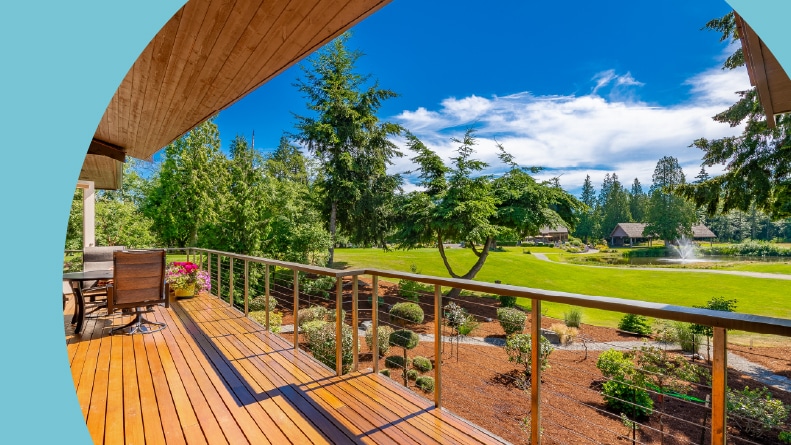
You’re probably aware that golf courses have a reputation for harming the environment. Old-school, traditional golf courses use a lot of water to keep those greens pristine, and pesticide and fertilizer runoff poses serious risks to groundwater resources and wildlife.
Fortunately, many modern courses are designed to reduce water usage by landscaping with drought-tolerant plants and turf, and species adapted to thriving in native soils with natural rainfall. Contemporary course designers and superintendents may also create swales and ponds to contain and control runoff, both preserving and redirecting surface water and keeping pollutants away from sensitive areas.
Finally, integrated pest management (IPM) practices reduce the amount of pesticides required to keep grasses and landscaping plants healthy. These techniques don’t just help preserve (or even enhance) local ecosystems; they can prevent illnesses in humans. As a bonus, they may even reduce maintenance costs, and those savings can lower your membership fees.
Pros
- Newer courses often focus on eco-friendly design.
- These practices may lead to lower maintenance costs and healthier ecosystems.
Cons
- Traditional courses use a lot of water and chemicals, potentially harming the environment.
- Some communities may not yet have adopted modern sustainability practices.
Security
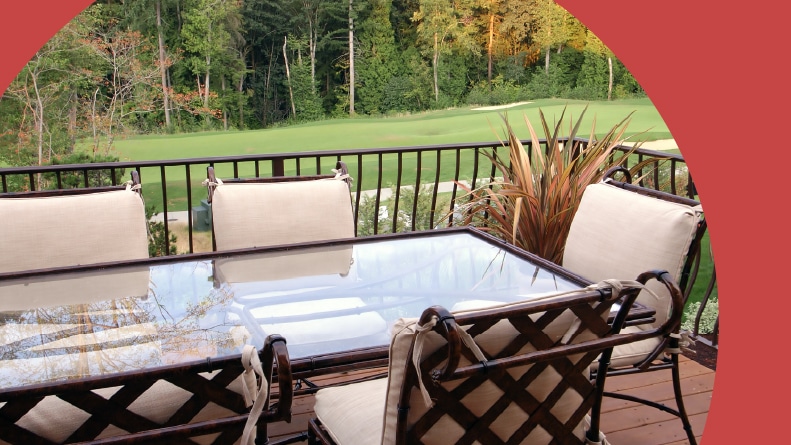
According to the Crime and Justice Research Alliance, homes are 33% less likely to be burglarized if they’re inside gated communities, and that’s where private golf courses are most often found. In addition to these enclaves usually being surrounded by walls with managed access, most gated communities employ private security firms to patrol the neighborhood and respond to disturbances. They may even hire or train on-site EMTs to assist with medical emergencies. That’s a plus for those in the 55+ demographic.
On the other hand, some residents may experience a false sense of security that may override common-sense safety practices. It’s also possible that public emergency services can be impeded by limited access to gated neighborhoods.
Pros
- Gated golf communities tend to have lower crime rates.
- Golf communities may include private security, adding peace of mind.
Cons
- Residents may develop a false sense of security.
- Emergency services access could be delayed due to gated entrances or limited road access.
Privacy, Protected Views, and Noise Pollution

If you live on a golf course, you don’t have to worry about new construction popping up in your backyard. You’ll have guaranteed views of stunning landscapes, which may include ponds, fountains, trees, and even wildlife. But don’t forget that those views go both ways! If you can observe golfers doing their thing, they can see you doing yours. You’ll likely want to invest in some floor-to-ceiling blinds for that giant window wall.
Also, golf courses aren’t always quiet. You’ll be privy to colorful language from golfers having a bad day. Maintenance equipment will wake you up in the morning, and that pond might attract Canadian geese that honk louder than gridlocked traffic in Downtown Manhattan.
Your conversations may reach unwanted ears, and you may be beholden to noise pollution laws that curtail the sounds you and yours make when playing in the pool or winning that sideline bet on the birdie. But maybe not; you could choose a home with a generous setback from greens, paths, and tees, or you can decide that the sound-carrying, waterfowl-bedecked water feature might not be worth the view.
Pros
- You’ll have guaranteed views with no risk of future construction in your backyard.
- Potential for scenic beauty with ponds, trees, wildlife, etc.
Cons
- Limited privacy—golfers can see you as easily as you see them.
- Noise pollution from maintenance crews, golfers, geese, etc. can be an issue.
- You may need to invest in window coverings or choose a home more setback to reduce disturbances.
Ready to Find Your Perfect Fairway Home?
Whether you’re looking for quiet mornings overlooking the 9th hole or lively evenings at the clubhouse, finding the right golf course community takes more than just a love of the game—it takes expert insight. At 55places, we connect you with real estate specialists who understand the unique lifestyle, amenities, and considerations that come with living on a golf course. Contact us today to get matched with a local expert who can help you navigate the market and find the home that’s a hole-in-one for your retirement.


